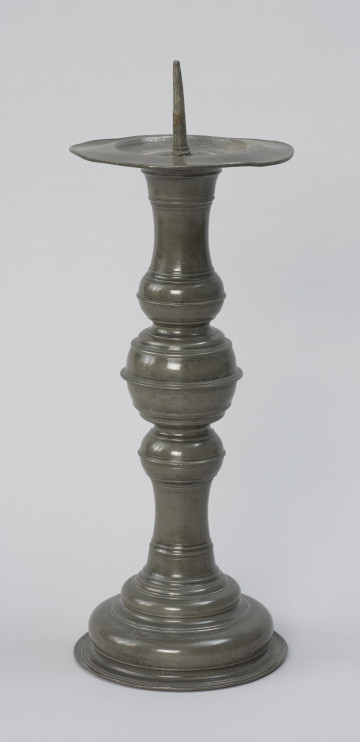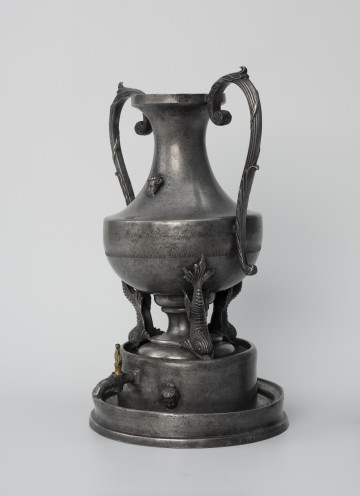
Candlestick
1663
National Museum in Szczecin
Part of the collection: Craft and industry products of Szczecin
The tin candlestick was made by a Szczecin craftsman, Gottlieb Gottschalk, whose name was entered in the city’s register in 1723. Gottschalk belonged to the tin casters guild, which brought together craftsmen who manufactured and processed tin objects for churches, castles and wealthy homes. Tin was a more durable material than ceramics, yet relatively easy to work with. Tin was used to manufacture many interesting objects, such as jugs and bed warmers, as well as simple tableware - cups, plates and bowls, decorative reliquaries, monstrances and chalices. The basic technique used by them was casting in moulds and decorating the resulting objects with engraving or cast reliefs. Tin products enjoyed particularly high popularity in the 17th and 18th centuries, as they were seen as luxurious and prestigious. The popularity of tin declined at the end of the 19th century, when new metal alloys that did not feature harmful lead appeared on the market. Eventually, in the 20th century, tin stopped being used for the production of functional forms, turning tin wares into collectors’ items.
Anna Lew-Machniak
Author / creator
Dimensions
cały obiekt: height: 34,8 cm
Object type
decoration
Creation time / dating
Creation / finding place
Identification number
Location / status

1663
National Museum in Szczecin

1923 — 1945
National Museum in Szczecin

1751 — 1825
National Museum in Szczecin
DISCOVER this TOPIC
Museum of King Jan III's Palace at Wilanów
DISCOVER this PATH
Educational path